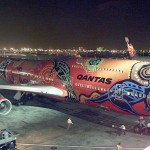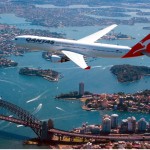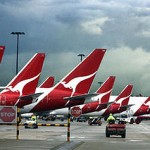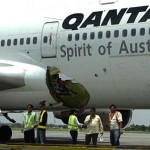Homesick – “I Still Call Australia Home”
Sep 20th, 2010 by Eugene Chan
I am an exchange student from Sydney, Australia and so I was thinking of writing a marketing blog relating to a uniquely Australian thing. What came across my mind was the 2009 Qantas Airways “I Still Call Australia Home” advertisement campaign.

Now in its fourth instalment, all Australians immediately recognise and associate the tune of this commercial with Qantas. The catchy melody, the picturesque scenery and the large-scale production of this advertisement has been and continues to be a worthy investment in the brand.
Since 1998, the “I Still Call Australia Home” campaign has generated, amongst all Australians, a strong emotional attachment to Qantas that has matured over the last 12 years. This emotional reaction has been targeted by Qantas in this latest campaign to not only build a sense of pride in Qantas and increase customer loyalty, but also to generate a sense of patriotism and satisfaction whenever one boards a Qantas aircraft. Furthermore, according to Alan Joyce, the CEO of Qantas, this advertisement was intended to highlight Qantas’ presence in the marketplace and improve internal morale during the global financial crisis (http://www.theaustralian.com.au/business/news/marketing-a-key-focus-for-qantas/story-e6frg90f-1225765386404).
What made this campaign even more effective, I think, was the unique twist this advertisement had. Unlike the previous three renditions, this advertisement incorporates elements of Indigenous Australia by commencing in the remote Australian outback with an Indigenous Australian boy who sings the characteristic tune in a dialect from the Torres Strait Islands. His singing is reciprocated by other singers who follow his voice back home – Australia – from famous international locations such as Paris, London and the Great Wall of China.
The inclusion of Indigenous Australians is a clever marketing strategy by Qantas that targets many segments of the Australian marketplace as most Australians are interested in Aboriginal rights, culture, equality and recognition. Therefore, by appealing to much of the Australian market, Qantas has not only engaged most Australians but also reinforced Qantas’ commitment to reconciliation (Reconciliation Action Plan). This has placed Qantas in a sustainable competitive advantageous position because it is difficult for other competitors (as viewed by the consumer), such as Singapore Airlines, Emirates and United Airlines to duplicate the connection Qantas has with the Indigenous population and thus, with the Australian marketplace. It seems that Qantas’ competitors have not been able to duplicate Qantas’ relationship with the Indigenous community, that has helped increase the perceived value and branding of Qantas, since the inception of the “I Still Call Australia Home” campaign in 1997.
However, I think that this campaign is not without its drawbacks. I have asked several of my local Canadian friends whether, upon seeing the first few seconds of the advertisement, they knew it was an advertisement for Qantas, yet alone an airline commercial. The answer from all of them was “no”. It was only in the concluding two seconds when a Qantas aircraft and its logo appeared that they realised that this was an airline advertisement; the majority of the advertisement are scenes of international cities and Australia. Thus, to the international audience, this may seem like a tourism Australian commercial and not an airline commercial. Rather, it relies on the knowledge embedded in the Australian culture that the audience can immediately link the melody to Qantas; a piece of knowledge which most of the international community lacks. Therefore, I am not sure whether this advertisement would generate the same strong emotional response shared by Australians in the international community.
Moreover, nowhere in this advertisement are Qantas’ products and services advertised, which is problematic as potential consumers/customers may not be aware of what Qantas has to offer. Ultimately, these consumers may patronise Qantas’ direct competitors and indirect competitors.
Finally, to base an advertisement campaign purely on emotional attachment is risky given the recent turbulence in Qantas’ safety standards and on-time performances. The runway overrun in 1999 in Bangkok, the mid-air explosion in 2008, the malfunctioned navigational instrument that caused a sudden dive in 2008 and the very recent 747 mid-air explosion of an engine less than a month ago near San Francisco have tarnished Qantas’ safety standards, reputation and image. Such a sentiment could seriously jeopardise Qantas’ advertisement which heavily relies upon the emotional bond that Australians have with the Qantas brand.
Overall, notwithstanding the recent problems with Qantas’ performance, I believe that Qantas has effectively utilised the “I Still Call Australia Home” song, which almost all Australians are aware of, to remind, persuade and strengthen Qantas’ reputation and branding at least in the Australian marketplace. This emotional attachment and consumer knowledge are two of Qantas’ strengths, which have given Qantas a sustainable competitive advantage within the Australian market. However, I am unsure whether this campaign would be as effective internationally. In order to successfully promote itself, Qantas has to bridge the culture gap (macroeconomic factor) by developing advertising that connects with the international market – i.e. shifting the focus from Indigenous Australia and from the “I Still Call Australia Home” tune to the products/services provided by Qantas and to one that targets the foreign country’s culture, behaviour, symbols and language differences to name a few.
P.S. These are links to the previous versions of this commercial.
1998 – https://www.youtube.com/watch?v=hbGuqmaDgLA&feature=related
2000 – https://www.youtube.com/watch?v=eMw0kzHaUUE




